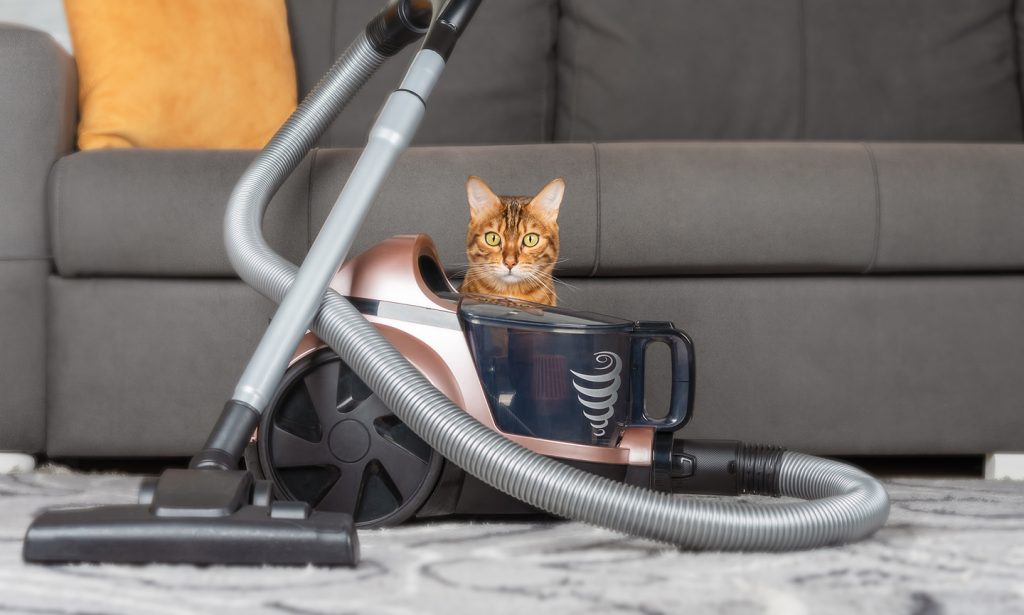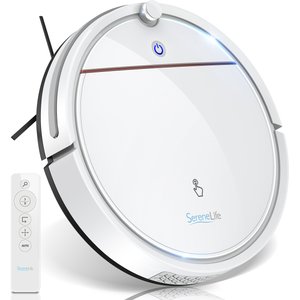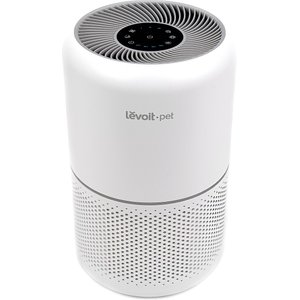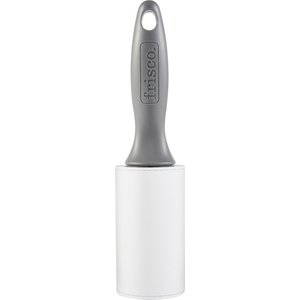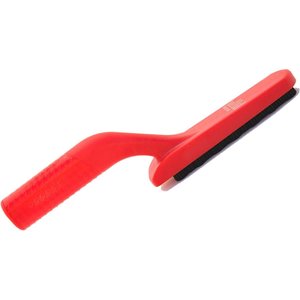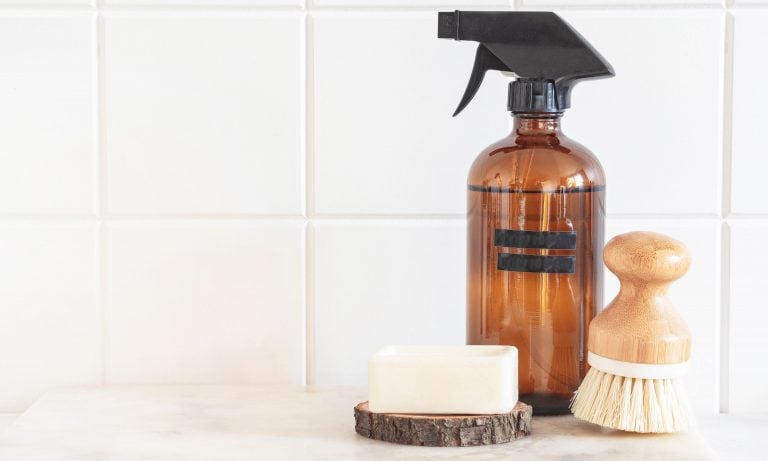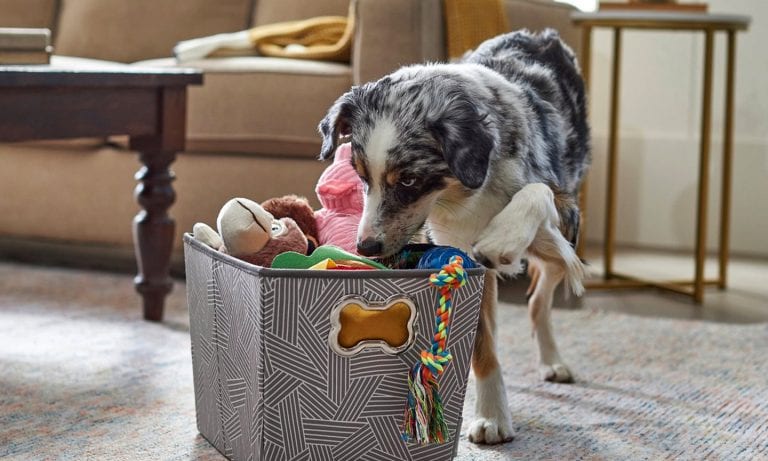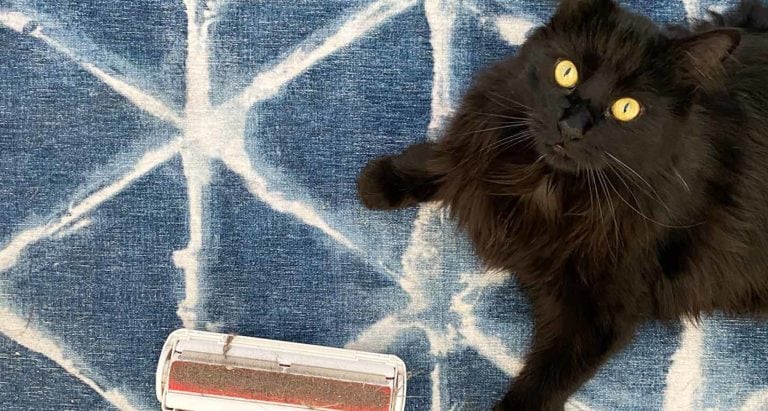Everyone will say that having a pet is the absolute best–and it’s 100 percent true! But what no one tells you before bringing home your new furry friend is how annoying pet hair can be. It seems to be everywhere, all the time. It’s on your couch, all over your hardwood floor and carpet, on your sheets, and even on you! And let’s be honest, making time to clean up cat or dog hair is hard, whether you’re too busy or just have zero motivation to attempt a fur-free home.
Luckily, there are plenty of tips, tricks, and hacks to keep pet hair under control.
How to Keep Your House Fur-Free
Click to jump to each section.
It All Starts with Grooming Your Pet Regularly
Some dog breeds, like Yorkies and Shih Tzus, have coats that grow a lot, but don’t shed, so having to clean up pet hair is much less of an issue, says Dr. Laura Robinson, DVM, Associate Veterinarian at Antonio Animal Hospital in Southern California.
However, other pets can benefit from regular grooming to help with shedding (and your sanity!):
- Long-haired dogs: Breeds such as Labrador Retrievers and Siberian Huskies who have long, thick coats with an inner and outer coat go through two shedding cycles per year: one in the later spring and one in late fall. Brushing these pups daily during those shedding cycles can make a huge difference in cutting down shedding. Plus, it limits the pet dander floating around your home, and by reducing pet dander, you can not only improve the indoor air quality in your home, but you can also help reduce allergy symptoms and asthma triggers.
- Short-haired dogs: Some dogs, such as Boxers and certain Chihuahuas, lack an undercoat and shed their hair throughout the year, but in smaller amounts. Still, brushing and bathing is important.
- Long-haired or senior cats: Cats are generally good at grooming themselves and don’t need to be brushed or bathed as often as dogs. However, some long-haired cats and senior cats may need a little assistance if they’re not good at doing it themselves. That said, it doesn’t hurt to brush cats regularly despite how fastidiously they groom themselves, as it does help cut down on fur around the home.
Handy Hacks for a Hair-Free Home
1.Buy a Robot Vacuum
2.Get an Air Purifier
Air purifiers are extremely useful in pulling the dust out of the air that your pet creates, says Katie Stepp, owner of Katie’s Cleaning Service in Northern Virginia.
We recommend trying the Levoit Core Pet Care True HEPA Air Purifier ($130). Just don’t forget to check the air filter and replace it when it gets dirty.
3.Cover Your Furniture
4.Dust Surfaces with a Dryer Sheet
5.Use a Lint Roller–or Duct Tape
6.Try a Mop with a Reusable Microfiber Mop Head
Why bust out the old bucket of dirty water when you can use something even better? A slightly damp dust mop head is the best way to get rid of pet hair, according to Stepp. Just spritz the bottom of the mop with a spray bottle of water.
We like Bona's Premium Pet Microfiber Mop ($20).
7.Consider a Duvet Cover for your Bedding
Washing a heavy comforter can be time-consuming if you have to do it weekly, but duvet covers can be removed from the inner comforter and take much less time to dry. Having a second set of sheets and pillowcases to swap in can also give you more time in between washes.
We like the FurHaven Waterproof Blanket Protector (in Large, $51).
House Cleaning Basics to Keep Fur at Bay
We know, we know; it sounds like a lot of work (Vacuuming every day? Mopping? Seriously?). But trust us—if you do it on the reg, it’ll help keep cleanup time short, which means more time for cuddling on the couch with your furry BFF.
Ready to learn all the cleaning basics you need to know? Read on for tips from cleaning expert, Stepp.
And if you really don’t have the time to clean? Hire a house cleaner to help out. Even if it’s once a month. They could cost an average of anywhere from $120 to $235 (even as low as $90 for spaces under 1,000 square feet).
Vacuum Every Day
Just the thought of vacuuming every day makes a lot of pet parents go, "Ugh!" But it’s one of Stepp’s essential fur-cleaning tips.
Consider getting a vacuum with added attachments for helping you remove pet hair from hard-to-clean spots, like furniture and stairs. Or, stick with the robot vacuum. They'll do the work for you.
Dust All Flat Surfaces
Yes, it’s time-consuming, but dusting every other day helps pick up cat and dog hair you may not at first glance see. This includes your coffee table, end tables, TV stand, shelves and bookcases, dining table, and countertops.
Mop Hard Floors
Even if you vacuum every day, sometimes not even the most powerful vacuum will remove pet hair from every inch of your home.
Mopping tile and hardwood floors is an effective way to make sure you clean up as much pet hair as possible.
For high-trafficked areas, like the living room and kitchen, aim for twice a week. For other not-so-frequently used spaces, like a guest room, aim for every 10 days.
Use a Pet Hair Removal Tool on Furniture
If your pet loves lounging on your upholstery, you may be wondering how to get pet hair off your couch. There are tools, like FURemover's Pet Hair Removal & Lint Brush ($7.50), that come in clutch to clean up all that loose fur build-up.
Wash Bedding Every Week
If you have a pet that loves snuggling up on your bed, your blankets, sheets, and pillows can collect a lot of unwanted cat and dog hair. Washing your bedding every week can help keep it fur-free and smelling great.
Keep Pets Active and Healthy to Reduce Shedding
Make Time for Exercise
A lack of exercise can cause stress and anxiety in pets, says Dr. Robinson, which can lead to excess shedding.
Feed Your Pet a Balanced Diet
While feeding your dog or cat a balanced diet is always a good idea, Dr. Robinson notes that nutritional deficiencies can actually cause excessive shedding. She recommends fish-based diets because they’re loaded with fatty acids that support a healthy coat and skin.
Stay Up to Date on Vet Visits
If you stay on top of your pet’s annual exams and vaccinations, your pet is more likely to be healthy and shed the normal amount for their breed. Sometimes, Dr. Robinson says, excessive shedding may mean there’s a health issue, like an allergy, parasite, hormone imbalance, or even cancer.
If you’re concerned with the amount of hair your pet is shedding, schedule an appointment with your vet.
More Cleaning Tips (Because You Simply Can't Have Enough):
Share:
